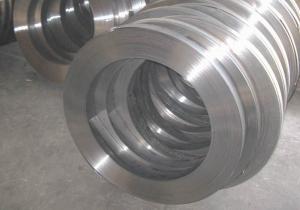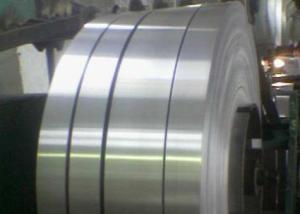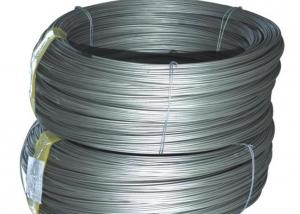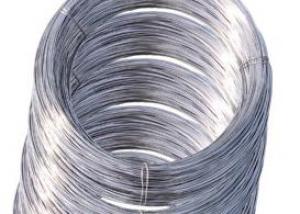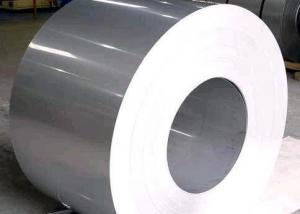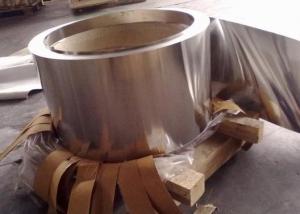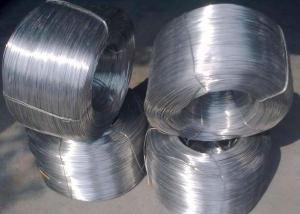Good Quality Stainless Steel Strips 316L
- Loading Port:
- China Main Port
- Payment Terms:
- TT or LC
- Min Order Qty:
- 1 Ton m.t.
- Supply Capability:
- 2000 Tons Per Month m.t./month
OKorder Service Pledge
OKorder Financial Service
You Might Also Like
Good Quality Stainless Steel Strips 316L
1. Chemical Composition of Good Quality Stainless Steel Strips 316L
C | Si | Mn | P | S | Ni | Cr |
Max0.03 | max1.00 | max2.00 | max0.045 | max0.03 | 10.00-14.00 | 16.00-18.00 |
2. Mechanical Properties of Good Quality Stainless Steel Strips 316L
Yield Strength | Tensile | Elongation | Hardness (HV) | Hardness (HRB) |
≥175 | ≥480 | ≥40 | ≤200 | ≤90 |
3. Standard of Good Quality Stainless Steel Strips 316L:
AISI, ASTM, GB, EN, DIN, JIS
4. Surface of Good Quality Stainless Steel Strips 316L
2B, NO.1, BA, NO.4, Hairline, SB, Mirror finish, Anti-skid, Cherkered etc.
5. Size of Good Quality Stainless Steel Strips 316L
Thickness: 0.3-3mm (cold rolled), 3-40mm (hot rolled)
Width: 1000mm or 1219mm or 1240mm for cold rolled, 1500mm for hot rolled.
Length: As customers' request.
6. MOQ of Good Quality Stainless Steel Strips 316L
1 Ton
7. Payment Terms of Good Quality Stainless Steel Strips 316L
T/T or L/C
8. Packing of Good Quality Stainless Steel Strips 316L
Seaworthy package with wooden or Iron pallets with the paper and the steel strip, or as customers' request.
9. Delivery Time of Good Quality Stainless Steel Strips 316L:
Usually about 7 days after we confirming the order, or according to your quantity.
If you have any question or demand, pls feel free to contact me.
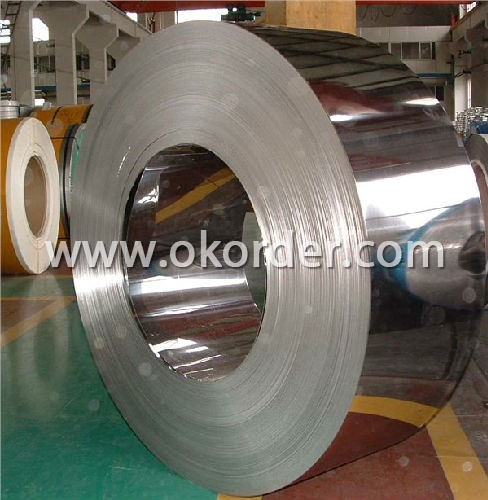
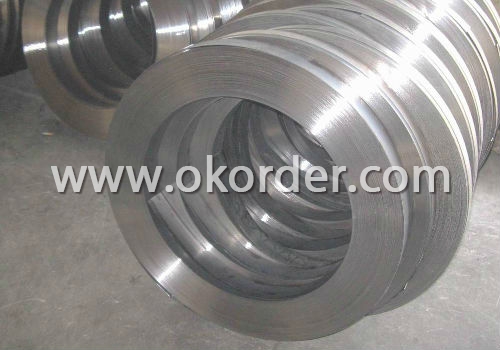
- Q:What is stainless steel wire made from?
- Stainless steel wire is primarily composed of an iron alloy that includes chromium and sometimes other elements like nickel or manganese. This alloy is renowned for its exceptional ability to withstand corrosion and rust, making it perfect for situations where durability and cleanliness are paramount. The specific makeup of the stainless steel wire may vary depending on the desired characteristics and intended use. By adding chromium, a protective layer of chromium oxide forms on the wire's surface, acting as a shield against moisture and preventing oxidation. This results in a wire that is highly resistant to stains, rust, and corrosion, making it well-suited for industries such as construction, automotive, medical, and food processing. Furthermore, stainless steel wire can undergo various processes, including drawing, annealing, or coating, to achieve specific mechanical properties or surface finishes. The versatility and strength of stainless steel wire have made it an incredibly popular choice in countless applications where strength, resistance to corrosion, and aesthetic appeal are crucial.
- Q:What are the different weaving patterns available for stainless steel wire mesh?
- There are several weaving patterns available for stainless steel wire mesh, including plain weave, twill weave, Dutch weave, and reverse Dutch weave. These patterns vary in terms of wire density, mesh opening size, and strength, allowing for different applications and levels of filtration.
- Q:Why does stainless steel have magnetism?
- In addition, austenitic stainless steel wire containing magnetic, is related to its processing technology, austenitic stainless steel raw materials are non-magnetic, but after processing, some finished products will have a weak magnetic.
- Q:What are the different types of stainless steel wire rope constructions?
- There are several different types of stainless steel wire rope constructions, each with its own unique characteristics and applications. Some of the most common types include: 1. 1x19 Construction: This type of wire rope consists of 19 individual wires twisted together into one strand, with one central wire surrounded by six strands of two wires each. It offers excellent strength and minimal flexibility, making it ideal for applications that require high tensile strength, such as standing rigging on sailboats. 2. 7x7 Construction: This construction consists of seven strands, each composed of seven wires twisted together. It provides good flexibility and moderate strength, making it suitable for applications like cable railing, garage door cables, and winch lines. 3. 7x19 Construction: Similar to the 7x7 construction, this type of wire rope consists of seven strands, but each strand is made up of 19 individual wires. It offers increased flexibility and higher strength compared to the 7x7 construction, making it suitable for a wide range of applications, including lifting slings, guy wires, and zip lines. 4. 6x19 Construction: This construction consists of six strands, each composed of 19 wires twisted together. It offers good flexibility and high strength, making it suitable for applications such as crane hoist ropes, winch lines, and overhead lifting. 5. 6x36 Construction: This construction features six strands, with each strand consisting of 36 individual wires twisted together. It offers excellent flexibility and high breaking strength, making it ideal for applications that require both flexibility and strength, such as elevator ropes, wire rope slings, and tow lines. 6. 1x7 Construction: This construction is made up of a single strand consisting of seven wires twisted together. It provides high tensile strength and minimal flexibility, making it suitable for applications that require maximum strength, such as control cables and wire rope fencing. These are just a few examples of the different types of stainless steel wire rope constructions available. The choice of construction depends on the specific requirements of the application, including strength, flexibility, and durability.
- Q:Is stainless steel wire suitable for weaving baskets?
- Yes, stainless steel wire is suitable for weaving baskets. It is strong, durable, and resistant to rust and corrosion, making it an excellent choice for creating long-lasting and sturdy baskets. Additionally, its malleability allows for intricate designs and tight weaves, making it a versatile material for basket weaving.
- Q:Is stainless steel wire suitable for wire rope sheaves?
- Yes, stainless steel wire is suitable for wire rope sheaves. Stainless steel has excellent corrosion resistance and durability, making it a suitable choice for applications that require high strength and resistance to wear and tear.
- Q:What are the different wire shapes available in stainless steel wire?
- There are several different wire shapes available in stainless steel wire, each with its own unique characteristics and applications. Some of the most common wire shapes include round wire, flat wire, square wire, and shaped wire. Round wire is the most basic and widely used shape. It is versatile and can be used in a variety of applications such as springs, mesh, and fencing. It is available in various diameters, allowing for customization based on specific requirements. Flat wire, as the name suggests, has a flat cross-section. It is commonly used in applications that require a low profile or where space is limited, such as in electrical connectors, screens, and micro springs. Square wire has a square cross-section, offering increased strength and stability compared to round wire. It is often used in applications that require structural support or where a more rigid wire is needed, such as in jewelry making and architectural applications. Shaped wire refers to wire that has been specially shaped or formed to meet specific design requirements. This can include wire with custom profiles, such as triangle, hexagon, or oval shapes. Shaped wire is often used in specialized industries like automotive, aerospace, and medical, where precise specifications and unique designs are necessary. In addition to these basic shapes, stainless steel wire can also be further processed or modified through techniques like annealing, tempering, and coating, which can enhance its properties and performance in specific applications. It is important to consider the specific needs and requirements of your project when selecting the appropriate wire shape, as each shape offers different benefits and characteristics.
- Q:Can stainless steel wire be used for wire EDM machining?
- Yes, stainless steel wire can be used for wire EDM (Electrical Discharge Machining) machining. Wire EDM is a precision machining process that uses a thin, electrically conductive wire to cut through a workpiece. Stainless steel wire is often preferred for wire EDM machining due to its high strength, corrosion resistance, and excellent conductivity. It can effectively cut through various materials, including metals, alloys, and even hardened steels. Additionally, stainless steel wire offers good stability, durability, and dimensional accuracy, making it a suitable choice for intricate and precise machining operations.
- Q:How does stainless steel wire perform in high-frequency vibration applications?
- Stainless steel wire performs exceptionally well in high-frequency vibration applications. Due to its unique composition, which includes a high level of chromium and nickel, stainless steel wire possesses excellent resistance to corrosion, heat, and wear. These properties make it highly suitable for environments with high-frequency vibrations, where the wire is subjected to constant movement and stress. The superior strength and durability of stainless steel wire allow it to withstand the demanding conditions of high-frequency vibrations without succumbing to fatigue or deformation. Unlike other materials, stainless steel wire maintains its structural integrity and retains its original shape even under extreme vibrations. This ensures the stability and reliability of the wire, making it an ideal choice for industries such as aerospace, automotive, and electronics, where precise and accurate performance is crucial. Furthermore, stainless steel wire has excellent electrical conductivity, which is important in high-frequency vibration applications. It allows for efficient transmission of electrical signals without significant interference or loss. This property is especially valuable in industries that rely on accurate data transmission, such as telecommunications and electronics. In addition to its mechanical and electrical properties, stainless steel wire is also resistant to corrosion and oxidation. This is particularly beneficial in high-frequency vibration applications where the wire may be exposed to moisture, chemicals, or extreme temperatures. The corrosion resistance of stainless steel wire ensures its long-term performance and extends its lifespan, reducing the need for frequent replacements or repairs. Overall, stainless steel wire is an excellent choice for high-frequency vibration applications. Its exceptional strength, durability, electrical conductivity, and corrosion resistance make it a reliable and efficient option for industries that rely on precise and consistent performance.
- Q:Is stainless steel wire suitable for automotive exhaust systems?
- Yes, stainless steel wire is suitable for automotive exhaust systems. Stainless steel is often used in exhaust systems due to its excellent resistance to corrosion and high temperatures. It can withstand the extreme heat and corrosive environment created by the exhaust gases, ensuring longevity and durability. Additionally, stainless steel wire is known for its strength and ability to maintain its shape under stress and vibration, making it ideal for automotive applications.
1. Manufacturer Overview |
|
|---|---|
| Location | Hebei,China |
| Year Established | 1989 |
| Annual Output Value | Above US$160 Thousand |
| Main Markets | Europe, East Asia and Southeast Asia |
| Company Certifications | ISO9001:2000; |
2. Manufacturer Certificates |
|
|---|---|
| a) Certification Name | |
| Range | |
| Reference | |
| Validity Period | |
3. Manufacturer Capability |
|
|---|---|
| a)Trade Capacity | |
| Nearest Port | Tianjin |
| Export Percentage | 70% |
| No.of Employees in Trade Department | 30 People |
| Language Spoken: | English;Chinese |
| b)Factory Information | |
| Factory Size: | Above 14,500 square meters |
| No. of Production Lines | Above 6 |
| Contract Manufacturing | OEM Service Offered;Design Service Offered |
| Product Price Range | Average |
Send your message to us
Good Quality Stainless Steel Strips 316L
- Loading Port:
- China Main Port
- Payment Terms:
- TT or LC
- Min Order Qty:
- 1 Ton m.t.
- Supply Capability:
- 2000 Tons Per Month m.t./month
OKorder Service Pledge
OKorder Financial Service
Similar products
New products
Hot products
Related keywords

